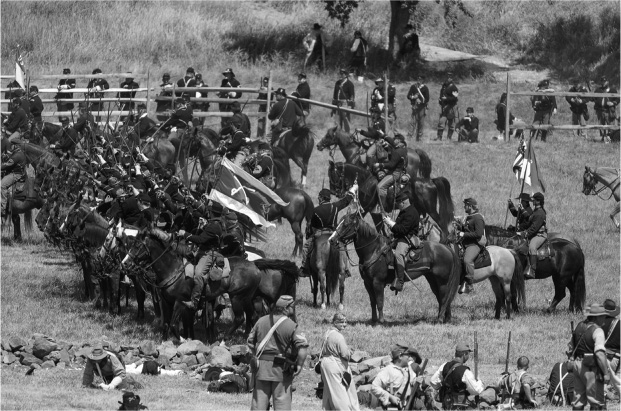Midpoint of the War: May to July 1863The Army of Northern Virginia Moves North |
How close—or far—were the opposing armies? |
As the sun went down on June 30, 1863, the opposing Confederates and Federals were all within a radius of forty miles: very close by our modern standards, but relatively far by theirs. J. E. B. Stuart’s cavalry, for instance, was only fourteen miles off from Robert E. Lee, but given that neither man knew the other’s whereabouts, it was almost as if one were in Virginia and the other in Maryland. In this muddled state of affairs, the Union leaders were generally better off because they knew the landscape better and because their forces were moving from south to north. The Confederates, on the other hand, were in areas they had seldom, if ever, seen before, and they were converging from three different points of the compass, headed toward their assemblage.

The Battle of Gettysburg is one of the most well-known conflicts in American history. A museum at Gettysburg is a popular tourist attraction, and hundreds of reenactors like those shown here relive those tragic days in remembrance of those who fell on both sides.
